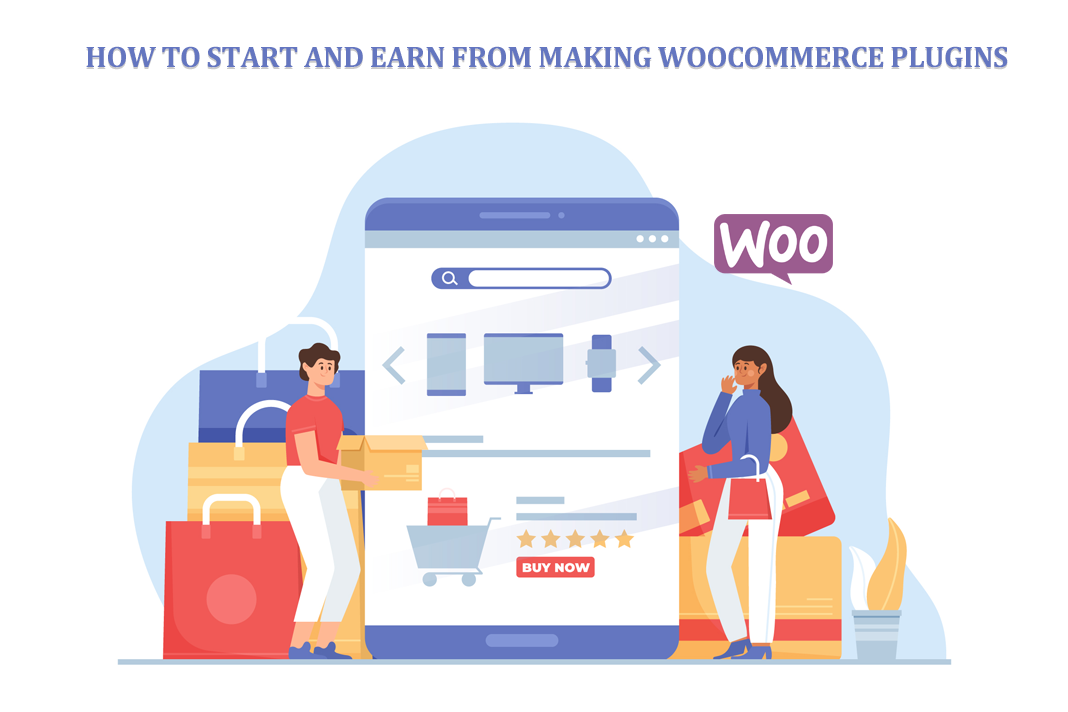Developing plugins is one of the many ways to make money with WordPress, but if you’re starting as a plugin developer, finding the road to success is not easy. That’s why I put together this detailed guide on how you can make money using your branding skills as an affiliate program. The main ways to make money as a plugin include selling advanced WooCommerce plugins such as WooCommerce product labels and badges, offering to customize your plugin, installing custom WooCommerce Plugin, and teaching others how to develop plugins.
Here are some ways to start selling WordPress plugins and making a lot of money. This guide will walk you through the different ways to sell WordPress and WooCommerce plugins.
WordPress/WooCommerce Plugin Development
If you find a solution to the problem and create a plugin for it (so that your audience will gladly buy it), nothing will stop you from making money. Check out a few existing plugins (preferably from the same brand) that make good money.
See if they use premium (paid) or freemium (additional plans and upgrade fees). Do they use WordPress.org, a marketplace, or rely on their website for promotion? You can also check the comments/reviews to get an idea of what support might be available. Then think about how you can do the same thing to generate income.
If you want to make money selling WordPress plugins, build them with a specific need. One of the best examples in this area is the Elementor page builder. This mega page layout plugin focuses on simplifying custom page layouts and has been used by over 4 million WordPress sites. In addition, the plugin funded its creation by releasing a special Elementor Pro with improved features.
Where to Sell Your WooCommerce Plugin
One of the first big decisions is where to sell our plugins: Should we build our eCommerce site or sell it on a third-party marketplace like CodeCanyon?
Markets are known to consumers. After all, who doesn’t love variety? And the market offers a lot of them. And you need to sell where there are buyers.
Selling WordPress plugins on your website is risky. It would be best if you got noticed and noticed, which requires a lot of money. However, if you are worried that people will need help finding your installation, you can benefit from the additional encouragement the market can give you.
In a marketplace, you don’t have to worry about spending a dime apart from the commission from your sales. Marketplace is a fantastic opportunity to give your plugins the best possible start. It’s worth checking out when deciding how to sell your plugins.
Offering Customization of Your WordPress Plugin
Once you have created a complete featured plugin that serves its purpose (even if you decide to sell it or offer it for free), you can start offering your plugin with all kinds of features, integrations and customizations users can request.
Let’s discuss the different customization requests you can get for your plugin.
Adding New Features
Custom requests are an inevitable part of plugin development – I can tell you this from personal experience. Special requests can be precious – not only can they provide ideas for your product roadmap, but also ideas for new installations.
When you receive special requests that take a long time, your first thought might be to tell the client that you will add them to your roadmap or that you think it’s complete but will be released for a short time.
While it may seem impractical to create a profile for just one user, you can charge by the hour and make a lot of money if that user needs four. Worth your time and your services. This is a win-win strategy.
So, instead of telling the user that it will take a long time to implement a feature, you can offer to build the extension for your hourly rate if they want to make it quickly, creating a relationship and collaboration with the client.
3rd Party Integrations
Many users will ask you to combine your installation with another installation or service, opening many opportunities for your products and business.
There are many different ways to do this to take advantage of integrating with a third-party plugin or service, including becoming a third-party partner, making a co-purchase if another service is available, to list you as one of their partners. , or benefit from self-marketing of the new combination.
Regardless of your chosen method, it will be a general application, and each situation will likely need to be handled separately. The bottom line is that you have to pay an hourly fee to create a collection for a specific use – and this is your chance.
Customizing for Specific Use-cases
Although it is found that there are no substitutes for new features or exceptions, the other problem is the damage that is not possible to seal in the user manual. Instead of creating an ability (which can be used in the personal context of the first person making the ability), you can have a threat that lowers the control of the front panel for branding—the user’s data.
This type of use case is usually different. It is resold as new unless you know used cases are often re-introduced, in which case you can include them as part of your first application or operating system.
The Burden of Plugin Support
Getting the proper support is the biggest challenge when starting a startup business. I know it sounds bad if you call plugin support a “burden”, but let’s be honest, that’s how it felt in the early days.
In the first few months, the installation business seemed doomed to fail because every purchase was accompanied by at least one support ticket. When we calculated our hourly rate based on the cost of each installation and the time it took to answer support tickets, it didn’t work building, not website development for clients.
We have yet to achieve our goal of moving to sell plugins. Getting the proper support is the biggest challenge when starting a startup business. Here are some essential tips to reduce the need for installation support.
Build Your Knowledge
Build an exploratory knowledge base and answer common questions. There are a lot of stories in our database, so there is a lot of work. However, it is faster to publish an article that will help many buyers than to answer the same question 10 times. Let people learn the basics before submitting a support query.
Learn From Every Support Request
Don’t just look at support tickets and try to resolve them quickly. Take each as an opportunity to prevent someone else from asking the same question. Consider whether it’s worth expanding the knowledge base, changing something in your plugin, or something else that will permanently solve the problem.
Put Documentation Where it’s Needed.
Don’t refrain from assuming customers will know where to find the data. I have seen many companies hide data in their files as if someone is looking for it! Instead, create online emails that send structured post-purchase instructions to the customer. Add tips and tutorial links to your landing pages. Please do your best to help customers help themselves.
Conclusion
Selling WordPress plugins can be tricky, but as a platform, you have many options. If you have decided that you want to start selling WordPress plugins, we hope that our guide helps you get started. However, if you are unsure about something, remember to ask us in the comment box.

